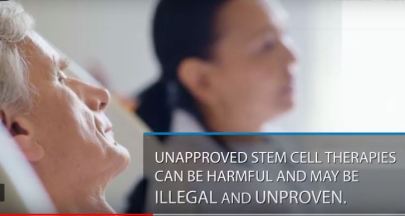News & Views: Patient-Focused drug development, Benefit-Risk for weight loss devices, Humanitarian Device Exemption, Warning for umbilical cord blood products, Special 510(k) program, Warning to JUUL, Safer Technologies Program
Patient-Focused Drug Development (PFDD) Guidance Series for Enhancing the Incorporation of the Patient’s Voice in Medical Product Development and Regulatory Decision Making
Series of four methodological guidance documents to collect and submit patient experience data and other relevant patients and caregivers information
- Collecting Comprehensive and Representative Input
- Methods to Identify What is Important to Patients
- Selecting, Developing or Modifying Fit-for-Purpose Clinical Outcome Assessments
- Incorporating Clinical Outcome Assessments into Endpoints for Regulatory Decision Making
 Consideration of Benefit-Risk Approaches for Weight-Loss Devices
Consideration of Benefit-Risk Approaches for Weight-Loss Devices
Proposal for assessing tolerability of risk in light of varying degrees of effectiveness for devices intended for weight loss
Benefits:
- Weight loss: Amount of weight loss, proportion of patients experiencing weight loss, durability of weight loss
- Changes in comorbidities: Clinically significant reduction in HbA1c18, hypertension, and/or hyperlipidemia
Risks:
- Adverse events: Severity, types, numbers, rates, duration
- Long-term effects of the device permanent implantation, anatomic changes, restriction of future treatment options, reversibility limitations
- Clinical treatments/procedures related to the device: Expected concomitant medications or therapies, rate of early device removal, risks related to placement/removal procedures

Humanitarian Device Exemption (HDE) and Humanitarian Use Devices (HUDs)
Devices intended to benefit US patients in the treatment or diagnosis of diseases or conditions that affect or are manifested in not more than 8,000 individuals per year
- Will not expose patients to an unreasonable or significant risk of illness or
injury, and probable benefit to health outweighs the risk - Would not be available to a person with the disease or condition in question
without the HDE; No comparable device
Scope of guidance:
- FDA Review Actions
- Assessing Probable Benefit and Risk
- Post-Approval Requirements
- Special Considerations for Devices Marketed Under an HDE
- Appendices to support the HDE Program: Filing Checklist, Probable Benefit-Risk Assessment Summaries
 Unapproved Stem cell therapy – Warning to Stemell for selling unapproved umbilical cord blood and umbilical cord products that may put patients at risk
Unapproved Stem cell therapy – Warning to Stemell for selling unapproved umbilical cord blood and umbilical cord products that may put patients at risk
Warning to Stemell, Inc. (Stemell), CA, for products derived from umbilical cord blood and umbilical cord: StemL UCB-Plus and StemL UCT-Plus
- Significant deviations from current good tissue practice (CGTP) and current good manufacturing practice (CGMP) requirements
- Deficient donor eligibility practices and environmental monitoring
- Creating potential significant safety concerns that put patients at risk
False claim that stem cell products don’t fall under the regulatory provisions for drugs and biological products

Special 510(k) Program
Facilitate submission, review, clearance of change to manufacturer’s own legally marketed predicate device (“existing device”) authorized through 510(K) or De Novo
- Performance data are unnecessary
- If performance data are necessary, well-established methods are available
- All performance data necessary to support SE can be reviewed in a summary or risk analysis format


Warning to JUUL Labs for marketing unauthorized modified risk tobacco products, including in outreach to youth
For marketing unauthorized modified risk tobacco products
- Engaging in labeling, advertising, and/or other activities directed to consumers
- Presentation given to youth at a school.
Requesting more information, about several issues raised in a recent Congressional hearing regarding JUUL’s outreach and marketing practices
- Targeted at students, tribes, health insurers and employers
Part of series of FDA actions for providing strong oversight of e-cigarettes and other electronic nicotine delivery systems (ENDS)

Safer Technologies Program (STeP) for Medical Devices
To spur innovation towards safer medical devices and was modeled after the Breakthrough Devices Program
- For PMA, De Novo and 510(K) pathways; Devices and device-led combination products
- Should be reasonably expected to significantly improve the benefit-risk profile
- reduction in the occurrence of a known serious adverse event
- reduction in the occurrence of a known device failure mode
- reduction in the occurrence of a known use-related hazard or use error
- improvement in the safety of another device or intervention.
Advantages
- Interactive and timely communications with the FDA, review team support, senior management engagement
- Prioritized review
- May reduce the total time to develop a device and achieve marketing authorization, while still meeting the agency’s gold standard for safety and effectiveness
Image credit: FDA
